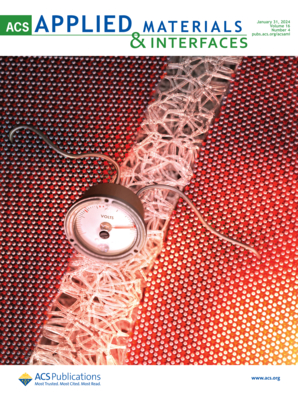Identification of cellular senescence-related genes and immune cell infiltration characteristics in intervertebral disc degeneration
IF 8.3
2区 材料科学
Q1 MATERIALS SCIENCE, MULTIDISCIPLINARY
引用次数: 0
Abstract
BackgroundIntervertebral disc degeneration (IDD) progression involves multiple factors, including loss of nucleus pulposus cells and extracellular matrix as the basic pathological mechanism of degeneration, and is closely related to cellular senescence and immune cell infiltration. The aim of study was to identify critical cellular senescence-related genes and immune cell infiltration characteristics in IDD.MethodsFour datasets, including GSE70362, GSE112216, GSE114169, and GSE150408, were downloaded from the Gene Expression Omnibus database. The senescence-related genes were acquired from the CellAge Database and intersected with differentially expressed genes (DEGs) between IDD and control samples for senescence-related DEGs (SRDEGs). Protein-protein interaction (PPI) network analysis was performed to obtain ten hub SRDEGs. A consensus cluster analysis based on these hub genes was performed to divide the patients into clusters. The functional enrichment, and immune infiltration statuses of the clusters were compared. Weighted gene co-expression network analysis was used to identified key gene modules. The overlapping genes from key modules, DEGs of clusters and hub SRDEGs were intersected to obtain potential biomarkers. To verify the expression of potential biomarkers, quantitative polymerase chain reaction (qPCR) and immunohistochemistry were performed by using human intervertebral disc tissues.ResultsIn the GSE70362 dataset, a total of 364 DEGs were identified, of which 150 were upregulated and 214 were downregulated, and 35 genes were selected as SRDEGs. PPI analysis revealed ten hub SRDEGs and consensus cluster analysis divided the patients into two clusters. Compared to Cluster 2, Cluster 1 was highly enriched in extracellular matrix organization and various metabolic process. The level of Follicular T helper cells in the Cluster 1 was significantly higher than that in the Cluster 2. IGFBP3 and NQO1 were identified as potential biomarkers. The remaining 3 datasets, and the result of qPCR and immunohistochemistry showed that the expression levels of NQO1 and IGFBP3 in the degenerated group were higher than those in the control or treatment groups.ConclusionSenescence-related genes play a key role in the development and occurrence of IDD. IGFBP3 and NQO1 are strongly correlated with immune infiltration in the IDD and could become novel therapeutic targets that prevent the progression of IDD.识别椎间盘退变中的细胞衰老相关基因和免疫细胞浸润特征
背景椎间盘退变(IDD)的进展涉及多种因素,其中髓核细胞和细胞外基质的丢失是退变的基本病理机制,并与细胞衰老和免疫细胞浸润密切相关。方法从基因表达总库数据库下载四个数据集,包括GSE70362、GSE112216、GSE114169和GSE150408。衰老相关基因来自 CellAge 数据库,并与 IDD 样本和对照样本之间的差异表达基因(DEGs)交叉,以获得衰老相关 DEGs(SRDEGs)。通过蛋白质-蛋白质相互作用(PPI)网络分析,获得了十个中心 SRDEGs。根据这些中枢基因进行共识聚类分析,将患者分为不同的群组。比较了聚类的功能富集和免疫浸润状态。利用加权基因共表达网络分析确定了关键基因模块。将关键模块的重叠基因、集群的 DEGs 和枢纽 SRDEGs 互相交叉,以获得潜在的生物标记物。结果 在 GSE70362 数据集中,共鉴定出 364 个 DEGs,其中 150 个上调,214 个下调,35 个基因被选为 SRDEGs。PPI分析发现了10个枢纽SRDEG,共识聚类分析将患者分为两个群组。与聚类 2 相比,聚类 1 高度富集于细胞外基质组织和各种代谢过程。簇1中滤泡T辅助细胞的水平明显高于簇2。IGFBP3和NQO1被确定为潜在的生物标记物。其余3个数据集的qPCR和免疫组化结果显示,退化组中NQO1和IGFBP3的表达水平高于对照组或治疗组。IGFBP3和NQO1与IDD中的免疫浸润密切相关,可成为预防IDD进展的新型治疗靶点。
本文章由计算机程序翻译,如有差异,请以英文原文为准。
求助全文
约1分钟内获得全文
求助全文
来源期刊

ACS Applied Materials & Interfaces
工程技术-材料科学:综合
CiteScore
16.00
自引率
6.30%
发文量
4978
审稿时长
1.8 months
期刊介绍:
ACS Applied Materials & Interfaces is a leading interdisciplinary journal that brings together chemists, engineers, physicists, and biologists to explore the development and utilization of newly-discovered materials and interfacial processes for specific applications. Our journal has experienced remarkable growth since its establishment in 2009, both in terms of the number of articles published and the impact of the research showcased. We are proud to foster a truly global community, with the majority of published articles originating from outside the United States, reflecting the rapid growth of applied research worldwide.
 求助内容:
求助内容: 应助结果提醒方式:
应助结果提醒方式:


